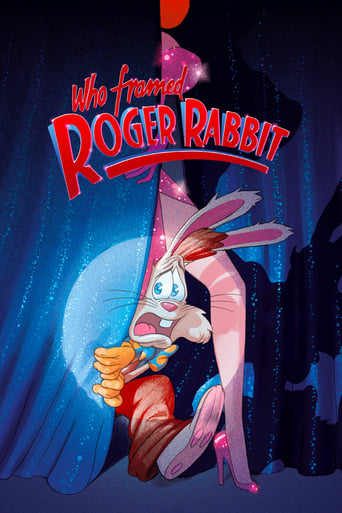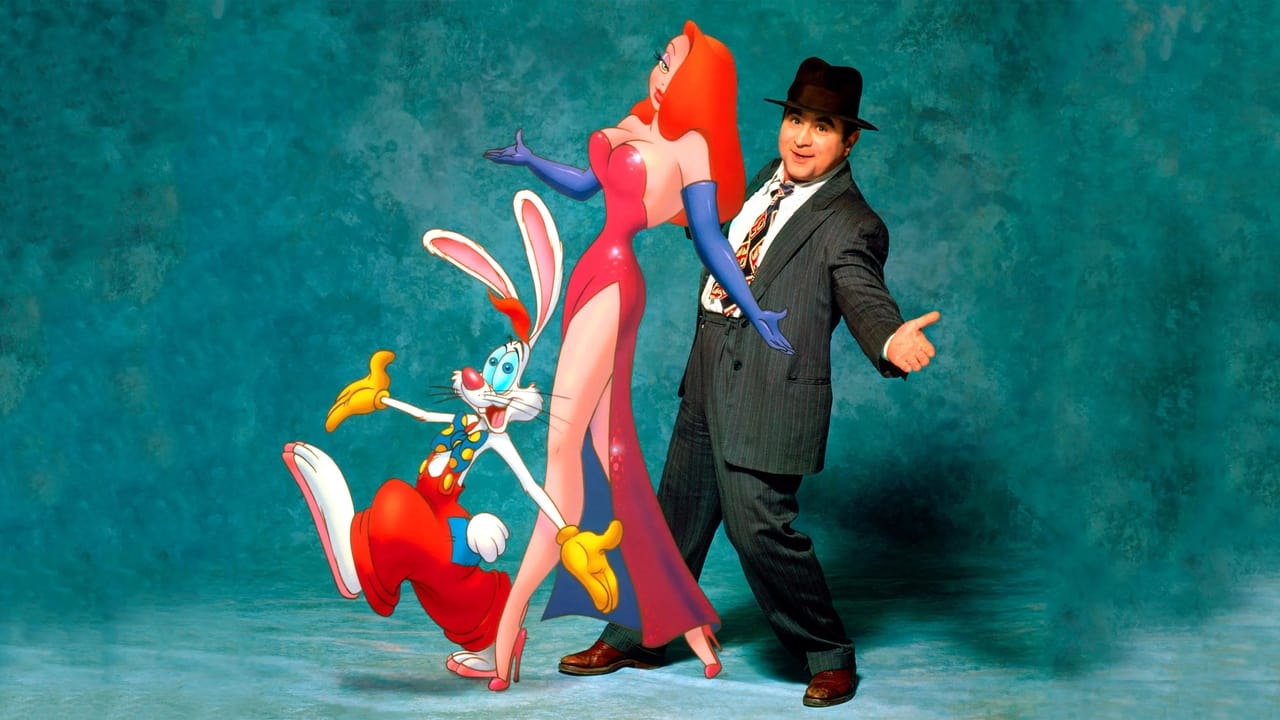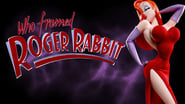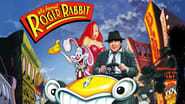elicopperman
Over the span of 30 years, Who Framed Roger Rabbit has been lauded for its technical innovations, admirable tongue-in-cheek tribute to cartoons from the Golden Age of American Animation and classic film noir, and just being a fantastic film in every regard. What was originally a book by the name of Who Censored Roger Rabbit went through roughly seven years of development before finally reaching the big screen in the summer of 1988. Since then, the movie would become arguably one of the most influential films of all time, and would also help launch the animation renaissance of the 1990s next to The Little Mermaid and Ren & Stimpy. As for me, considering that this is my all time favorite movie, you can bet I have much to say about it.Set in Hollywood around 1947, where cartoon characters exist in the real world, cartoon star Roger Rabbit is accused of murdering owner of Toontown, Marvin Acme. This was the result of alcoholic private eye Eddie Valiant getting hired by cartoon producer R.K. Maroon to investigate adultery involving Roger's wife Jessica and Acme. Now Roger tries to get Eddie to clear his name from the villainous Judge Doom who vows to destroy him and all other toons. While that plot does sound wacky in concept, it nonetheless adds in to the film's tone, as the whole film is a passionate love letter to the style and humor of cartoons from the 1940s. The very first scene is a Roger Rabbit/Baby Herman cartoon entitled Somethin's Cookin', which is a rapidly paced homage to the zany cartoons of Tex Avery and Hanna-Barbera. Of course the other pairing of toons themselves are memorably hilarious, especially that famous Daffy Duck and Donald Duck piano duel, but the film always keeps on its toes to make sure the main story doesn't get out of focus.In terms of the film noir aspect, the general story is executed as one big crime case that has much more hidden underneath it as Eddie unravels more clues. Admittedly, the plot can be a little complicated to follow at times, mainly due to the immense amount of details once everything is revealed, although it does make much more sense upon repeat viewings. Nonetheless, the buildup further creates the necessary suspense and thrills to figure out who exactly is behind the cartoon murder case. It's with all of these elements that help recreate the original book's mystery angle while condensing it a bit to play around with the cartoony antics and fast paced comedy. It's debatable whether or not the filmmakers studied any particular film noir classics, but the film's point of view as a thriller is so well put together that it's hard to believe that wasn't the case.As for the characters, Eddie Valiant may start off grouchy, but it's through his backstory that explains his inner struggles with toons, and Bob Hoskins portrays his down-to-earth persona up to the point where one could also relate to something they love ruining their life. Charles Fleischer pulls off Roger's voice, and while some could find it annoying, he manages to carry Roger's emotions in context to the human actors astonishingly while making him delightfully amusing. Jessica Rabbit could pretty much be called the spiritual successor to Tex Avery's Red Hot Riding Hood, mainly from her bombshell design and scarlet attire, but she's also a very devoted wife to Roger, showing how sometimes a human and a rabbit being married ain't so bad after all. Lastly, Judge Doom may seem like a subdued psychopath at first, but his plan to wipe out all toons is so diabolical that his reveal sums up his whole character. While there are other fun characters like the weasels, Dolores, Benny the cab and Baby Herman, they're not quite as developed as the rest, but they do their jobs well as supporting characters. What's interesting to mention is a subtle social commentary on how the toons are depicted. Similar to the book, the toons are depicted as minorities, since real people don't really interact much with them outside of working in Hollywood, unlike that of Eddie and friends or Judge Doom and his weasels. Not to mention, the scene where Roger tells Eddie how laughter can be a very powerful thing while standing on a soap box is rather symbolic of African Americans standing up for their own rights. In fact, ToonTown is essentially a ghetto since only toons live there far off from the people of the real world. Hell, Roger stated in the film, "there's no justice for toons anymore," as if that statement was similar to how little justice there were for people of different races back then. It's when Judge Doom reveals his plans to turn ToonTown into a freeway where viewers may see the lovable toons in a completely different light. While these metaphors are more subtly played out, this really makes that legendary happy ending with all our favorite animated characters celebrating Marvin Acme's will surfacing their free rights a blessing in a way.I think Richard Williams was the perfect choice to direct the film's animation, as he and his crew managed to set up distinct rules in combining the toons with the real world. For example, when Roger crashes through R. K. Maroon's office, the hole he leaves behind looks just like him, and one scene shows Roger spitting out realistic water, not water drawn on paper. This is not only thanks to the highly talented animators, but also ILM who helped create a wonderful method of compositing the traditional animated characters into the same environments as the live actors without using advanced computers. The processes ranged from prop manipulation, to superimposing the frames on photostatic blowups, to multiple matte layers, and especially constant camera motion, showing just how painstaking the process must have been for the crew. In addition, Williams designed Roger based on features of characters born out of Warner Bros, MGM, and Disney. Considering how hard it is to make real people interacting with characters of another realm look convincing, the techniques worked so well that one could imagine the film's world being real.Of all the films that have combined live-action and animation, as well as being tributes to classic cartoons and crime thrillers, there may never be one that will even come close to topping this one. Who Framed Roger Rabbit still stands the test of time for its fantastic technical achievements, intriguing story with some hidden albeit smart depth and satire, lovable characters and charming imagination. At this point, there's no reason not to see this film again, as anybody who loves cartoons, film noir, or even highly creative movies in general will get a kick out of this now as much as the audiences of back then. And now, to end this off, time to quote the movie itself: "Things are never black as they are painted, time for you and joy to get acquainted. So make life worthwhile; come on and smile, darn ya, smile."
Pjtaylor-96-138044
A hard-boiled, detective drama film noir combined with a rubbery, slapstick Tex Avery cartoon, this unique and wonderfully inventive flick masterfully combines two mediums and genres into one intrinsic piece with a cohesive and believable visual style and a thrilling and compelling narrative. 'Who Framed Roger Rabbit (1988)' is a beautifully animated, incredibly inventive and brilliantly put-together picture that plays like the best of both of its core inspirations while also acting as a nice satire to them, ending up a remarkably impressive and wholly entertaining experience that's as awe-inspiring as it is fun and breathlessly enjoyable. 7/10
Filipe Neto
In this film, the iconic Roger Rabbit is charged with murder and will have to resort to a human detective who hates cartoons to prove his innocence. Directed by Robert Zemeckis and written by Jeffrey Price, the film features performances by Bob Hoskins and Christopher Lloyd, as well as the voices of Charles Fleischer and Lou Hirsch.This film did something that, until then, was extremely rare: put human actors interacting with animated characters. And this was done with quality and a welcome realism. I excused to say, I believe, that the cartoons are the strong dish of the film, as well as the countless comic situations they star in. Bob Haskins shone in his role, skillfully balancing a comic character who maintains, throughout most of the film, a serious and even grumpy attitude. Of course, his most angry phrases eventually turn him into something even funnier. Christopher Lloyd comes late but in excellent performance, as villain. Cold as ice, insensitive to no end, he gave life to a memorable character with personality traits worthy of a Nazi executioner. Among the cartoons, Roger Rabbit and his sculptural wife, Jessica, deserve all the highlight.This is a family film that will easily appeal to all ages. The bright colors of the cartoons are appealing, contrasting with the more serious environment of the "real world" and flesh and blood actors. The special, visual and sound effects are excellent. The costumes are good and help the public to locate the story around the forties. The soundtrack is good and the music sung by Jessica, a jazz classic "Why don't You Do Right", is memorable.
LeonLouisRicci
Virtually a "Stand Alone", Extravagant, Exuberant, and completely Nutzoid Movie that was, at the time, Audacious, Ambitious, and anything but the usual Stuff released Weekly by the Hollywood Big Shots.In its Initial Release it Pleased most Moviegoers, especially those old enough to have Grown Up with Disney, Warner Brothers, and the other Competing "Toon" Studios. Just about All of the Toon Characters that Appear in Cameos and Background were Popular in the Full Animation Period that lasted until about the Early Sixties when Hanna Barbara's Cheap and Flat Style took over Television and Killed the much more Expensive, but more Impressive Predecessor.Eye-Popping, Fantastic, and Frenetic, if the Film has a Fault, it may be its over Enthusiastic Inclusion of so Much in so Little Time. Much of the Frame is constantly being "Fought Over" for Screen Time by the Myriad of "Toons" Squeezing in and out of Scenes. Also, some have Problems with the Main Character, Roger Rabbit's Irritating and Grating Voice and He doesn't quite Measure Up to the Legendary Appeal of the Supporting Cast of His Animated Cousins.But maybe, He was "Just Drawn That Way". Anyway, His On Screen Wife Jessica never has that Problem and is one of the Movie's Standouts (Her Action Figure was an instant sellout) and is Infamous for early home Video freeze frames.The Film has been given its Due by Fans and Critics even after the Initial Wonder Dissipated. It may not be as Impressive Today but few Films as Groundbreaking and Innovative as this that Push the Boundaries of the Art-Form to New Levels and New Directions Rarely are. Overall, slightly Underrated but cannot be denied its Status as a Belligerent, Beautiful, and Wonderful Experiment that gave Movie Patrons a Platform for its Joyful Nostalgia, and yes, it did and does make People laugh.



 AD
AD










